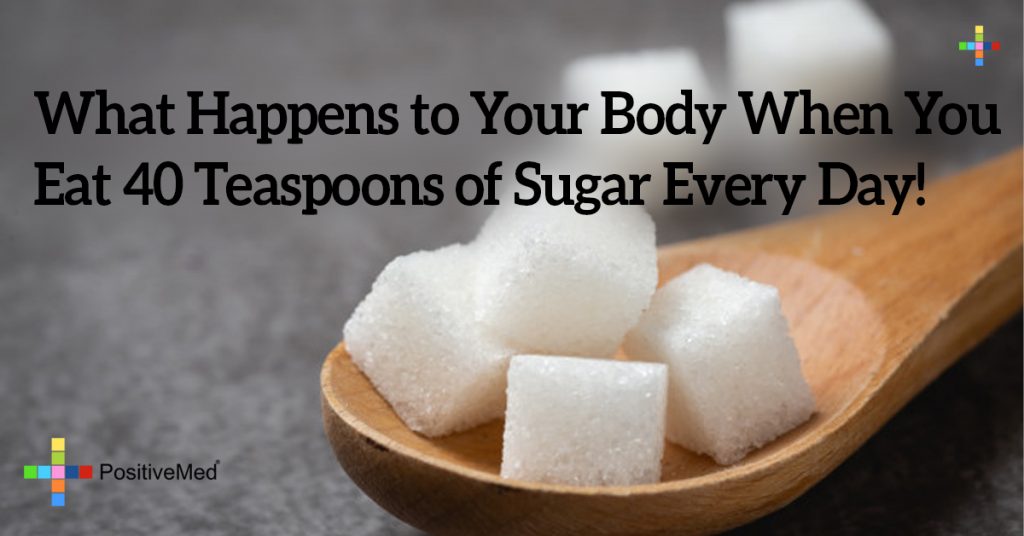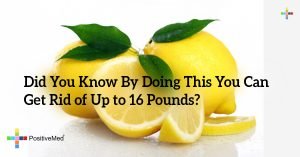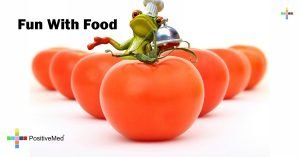
What Happens to Your Body When You Eat 40 Teaspoons of Sugar Every Day!
Sugar is oh so tasty. It is one of the tastes that are craved. Salt is another craved taste, but good old sugar has energy in it. This trains the body to want more of it. Sugar is energy dense. A little has a lot of calories. Unfortunately, it has no nutrients such as vitamins or minerals. And equally unfortunate is that the bacteria alive in your gut can prompt your mind to desire more sugar. Plus, your body is designed to want to store up calories for when food is scarce. The thing is, food is never scarce for the average American, and they end up eating more than three-fourths of a cup of sugar every day.

Sugar Is Everywhere
Newer diet drinks are now using some small amounts of regular sugar to increase taste appeal. Most baked products need sugar to react with the yeast to make the dough rise. Then, more sugar is added to make them sweet. Boxed breakfast cereals are notorious for their sugar content. Look at the ingredients on the label. They are listed in order of quantity. Some cereals directly marketed to children have sugar as the first ingredient! Look at the calorie count on a can of regular soda. It will likely be close to 150 calories. Since it is water, coloring, and flavoring with sugar being the only energy nutrient, that means all of those 150 calories are from sugar!
RELATED ARTICLE: Are Low-calorie Sweeteners Better for You than Sugar?
Sugar and Metabolic Syndrome
The major issue facing Americans today is not healthcare, taxes or consumer prices. It is their actual health. Type 2 diabetes used to be a disease diagnosed later in life. It is brought on by sedentary living and poor dietary choices. American children are now being diagnosed with Type 2 diabetes because of low daily activity and high intake of sugary and fatty foods.
Sweet and grease are the two major ingredients of almost every processed food. The third is salt. They are combined to make the food have a taste people crave. The problem is that it leads to weight gain, and just being a few pounds above ideal weight leads to elevated blood glucose, higher cholesterol and triglycerides, and higher blood pressure. All of which are chronic conditions that eventually lead to diabetes, heart disease and stroke.
RELATED ARTICLE: 7 Signs Your Blood Sugar Is Out Of Whack
Beginning the Trend Away From so Much Sugar
Unless a doctor advises it, there is no need to go cold turkey with sugar consumption. That just makes your body respond with sugar withdrawal symptoms. The natural approach would be slowly adopting an increased use of safe non-nutritive sweeteners in snack foods and beverages to control sweet cravings while lowering caloric intake. At the same time, you should slowly get away from boxed and microwave foods being consumed in abundance, and prepare more meals using freshly derived ingredients. Again, work this slowly and purposefully. Instead of a microwave pasta meal that is enhanced with extra sugars, prepare your own with ingredients you are certain of. Look at the sugar content on nutrition labels. Compare products and opt for ones lower in sugar.
The journey of reducing sugar consumption begins with the knowledge that too much of it can cause health problems. The Sugar Film is a great introduction into the health effects of too much sugar with helpful hints on how to begin to take control of the amount of sugar creeping into a person’s daily dietary intake.





